With their luminous golden eyes, dramatic black 'eyeshadow', and gorgeous mottled feathers, short-eared owls (Asio flammeus), or ‘shorties’, are true stunners of the bird world.
The same cannot perhaps be said of their vocal abilities, with these feathered chanteuses' calls sounding alternately like barks, shrieks, and steam trains! Males of this species also have the curious ability to create clapping sounds with their wings – a sound evidently impressive to potential mates and competitors alike.
Read on to learn all about these beautiful birds, how to identify them, and what is being done to ensure their survival, in our expert guide by the RSPB:
What is the scientific name of the short-eared owl?
The scientific name of the short-eared owl is Asio flammeus.
The owls belonging in the Asio genus are known as ‘eared’ owls, due to the tufts of feathers that some of them have, which look like mammalian ears. Not all species of ‘eared’ owls have noticeable tufts or ‘ears’.
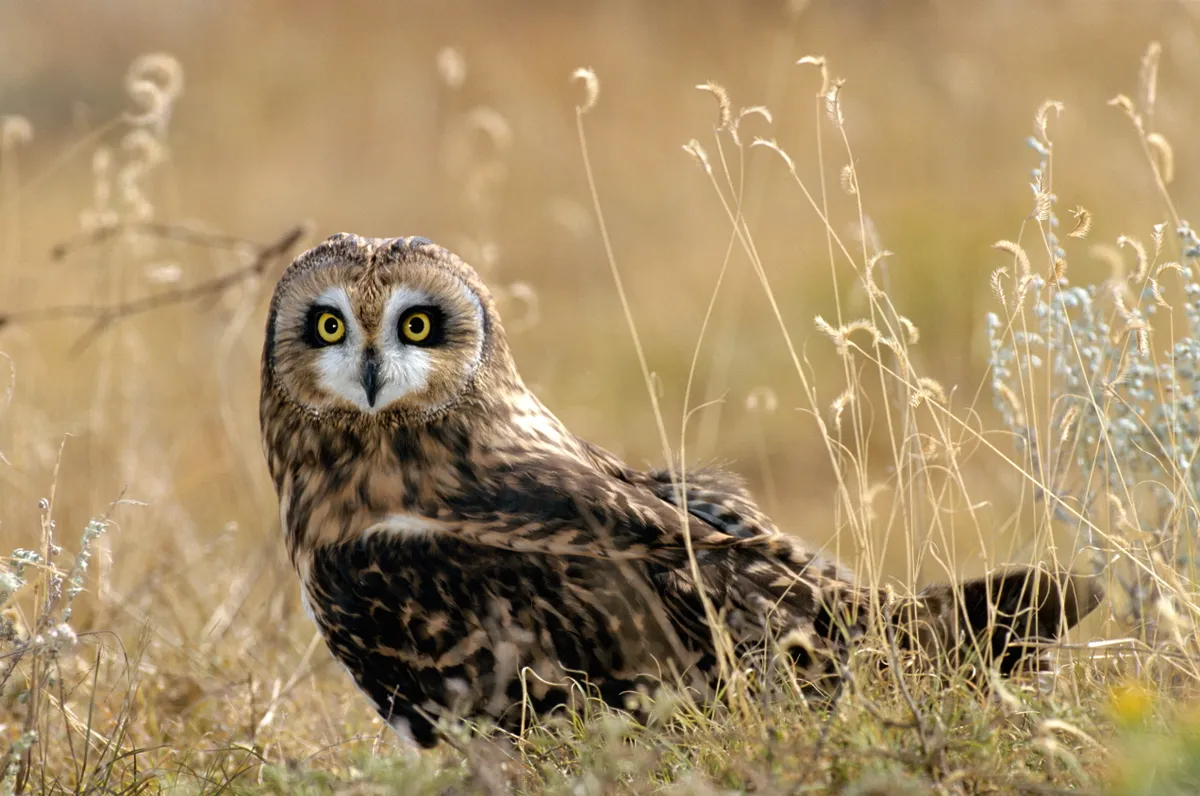
In the UK, the only other resident species of ‘eared’ owl is the long-eared owl (Asio otus; pictured below). The other resident species (barn, tawny and little) belong to different genera.
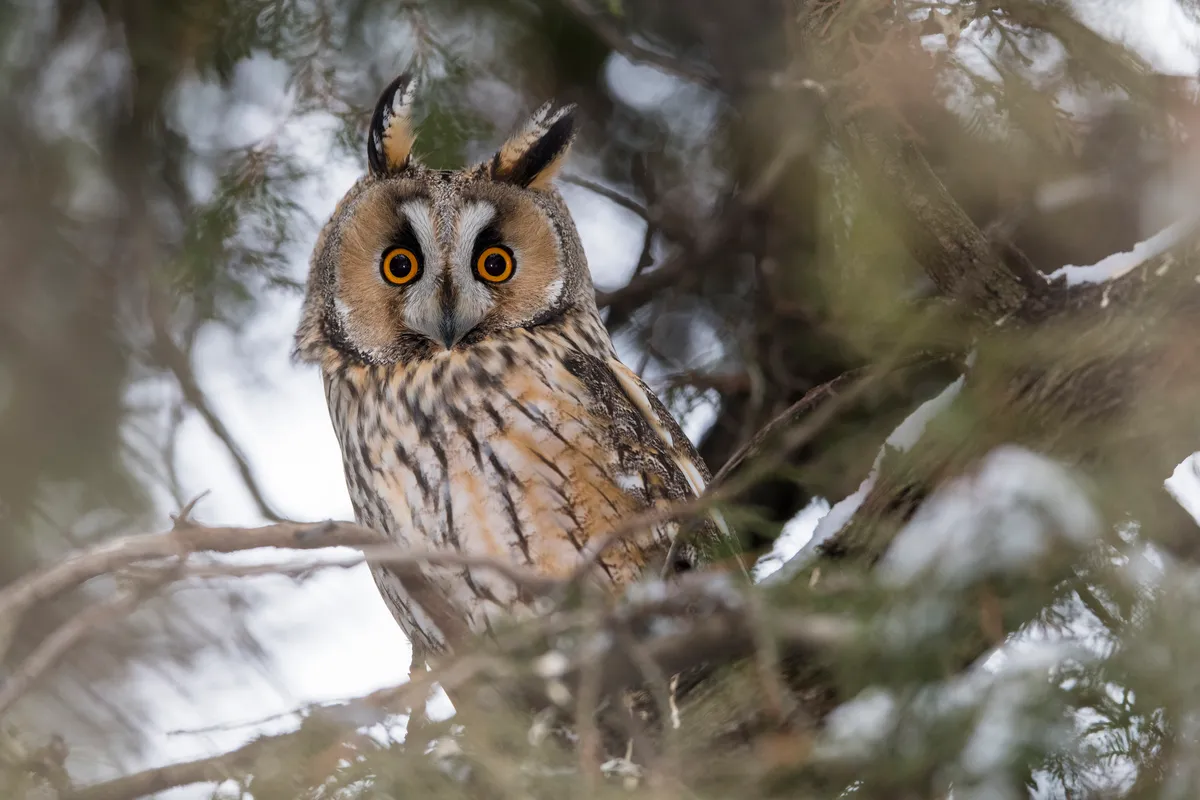
How to identify short-eared owls
Short-eared owls are medium-sized with mottled brown bodies, pale under-wings and yellow eyes. It’s rare to see their short ‘ears’ (actually tufts of feathers), so it may be easier to look for the black markings around its eyes resembling deep eye shadow.
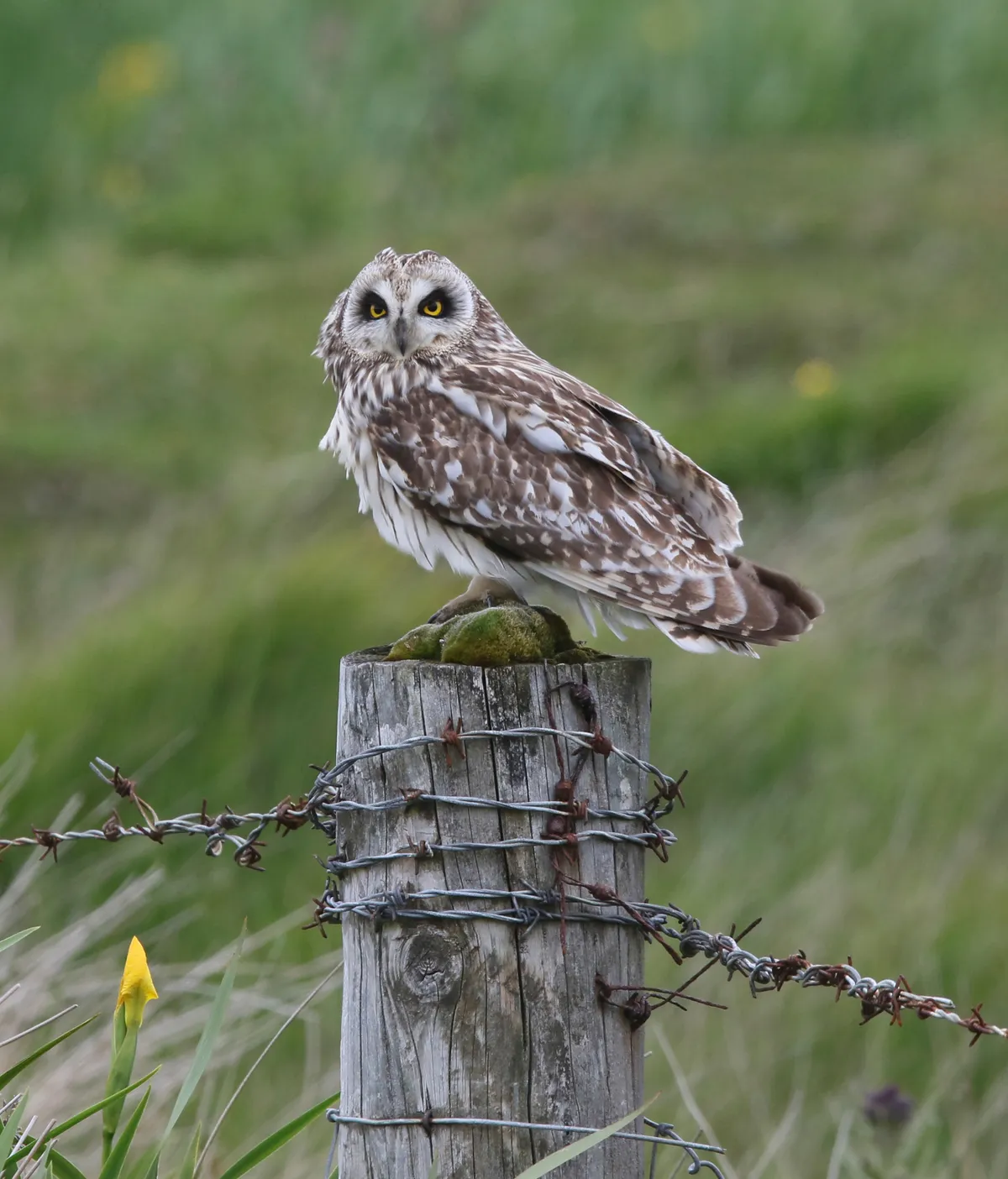
How to identify short-eared owl pellets and feathers
Their pellets are elongated, rounded at one end and tapered at the other. They look quite similar to barn owls, dark grey and lacking a varnished appearance.
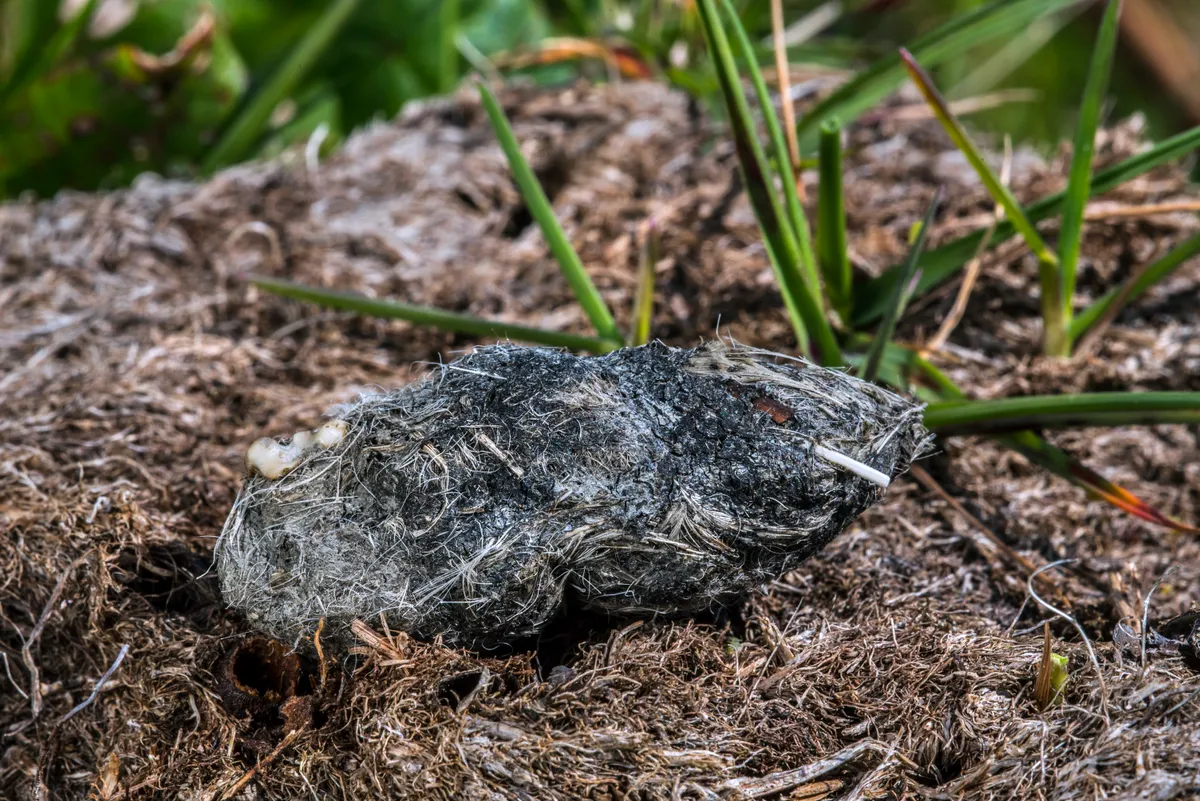
Their feathers are made up of gorgeous mottled stripes, with a dark brown ‘spine’ branching out to the rest of the feather with a lighter, almost golden brown interspersed.
Where are short-eared owls found?
Short-eared owls are unusual in that they are dusk/dawn hunters and are often seen actively hunting during the day! They tend to favour moorland, dunes and heathland, and mostly breed in northern England and Scotland.
They spread out a bit more during the winter and are joined by the continental short-eared owls who come from Scandinavia, Russia, and Iceland to northern, eastern, and parts of central southern England.
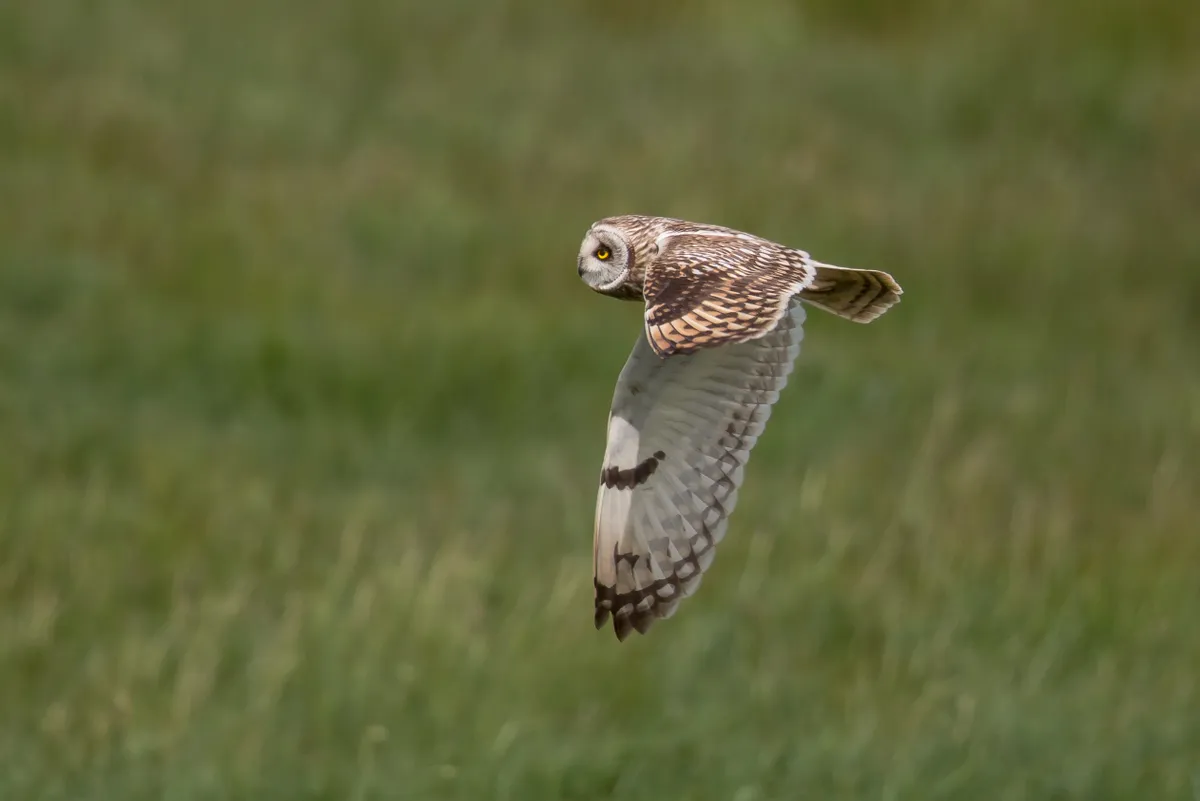
How many short-eared owls are there?
There are between 620-2,180 breeding pairs in the UK.
What do short-eared owls eat?
Short-eared owls mostly feed on small mammals, especially field voles, but they will also feed on small birds, particularly in winter.
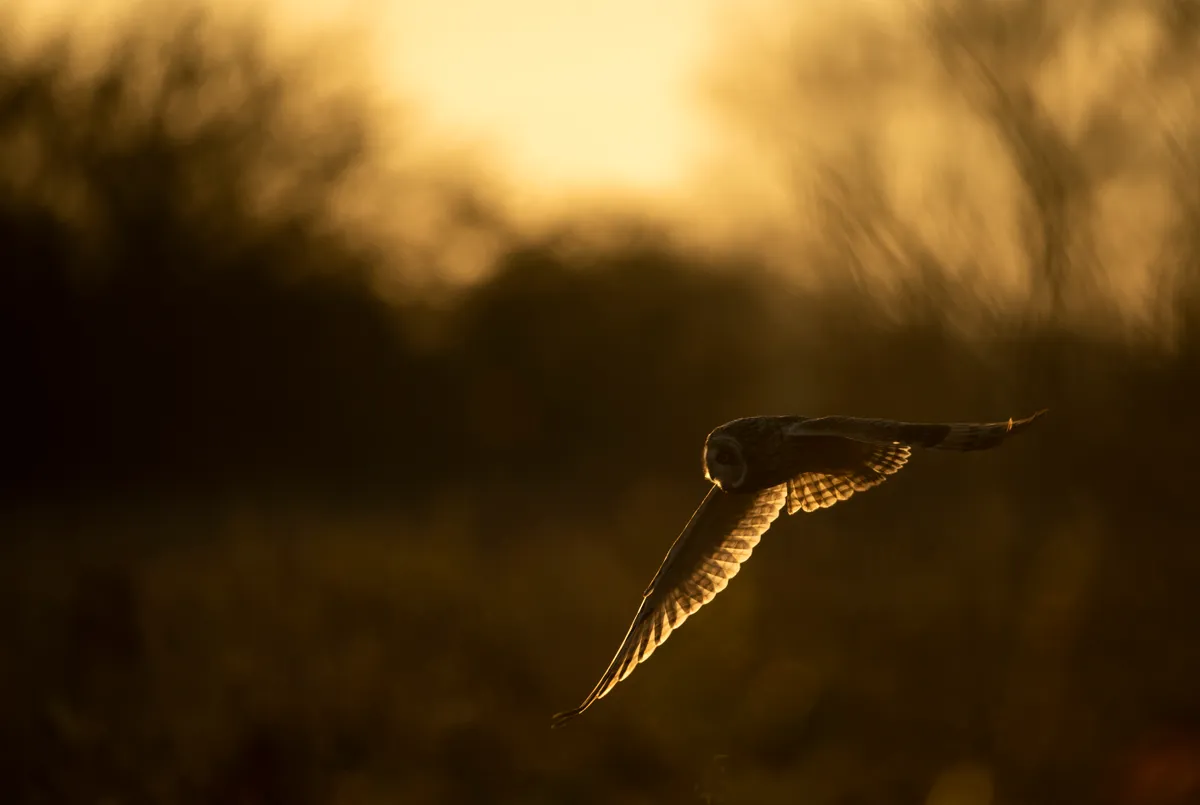
What eats short-eared owls?
They are a ground-nesting bird so can be predated on by foxes. Crows are known to raid nests, and dogs can damage nests.
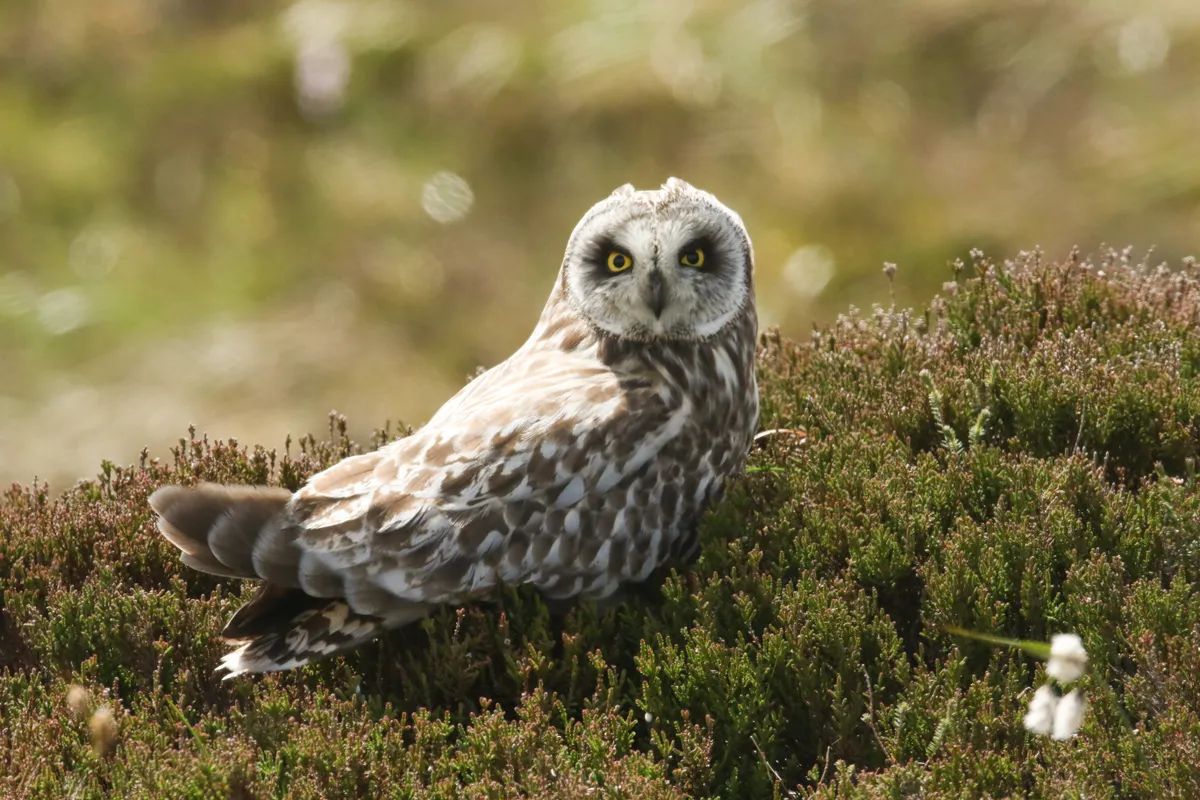
How long do short-eared owls live for?
Most records show short-eared owls living for four years, though the little data that’s available shows some birds living as old as six.
What do short-eared owl calls sound like?
While both males and females have a multipurpose barking call, they also have sex-specific sounds. The males have a short, repeated soft hoot, sounding like a distant puffing steam engine, while the females emit a more hawk-like shriek.
The males have one more auditory string to their bow - when courting females or defending their territory they sail down from about 100ft in the air, clapping their wings together in sharp bursts that sound like subdued handclaps.
How many eggs do short-eared owls lay?
The female can lay between four and sixteen eggs, but normally lays six to eight. The female will immediately start incubating the eggs as she lays them, meaning that they will come out of their shells a few days apart. The doting male will then bring food to the female who feeds the chicks in her turn.
Are short-eared owls endangered?
The short-eared owl is not yet endangered, though it is listed as ‘Amber’ on the UK List of Conservation Concern because of recent declines in suitable habitat and population numbers.
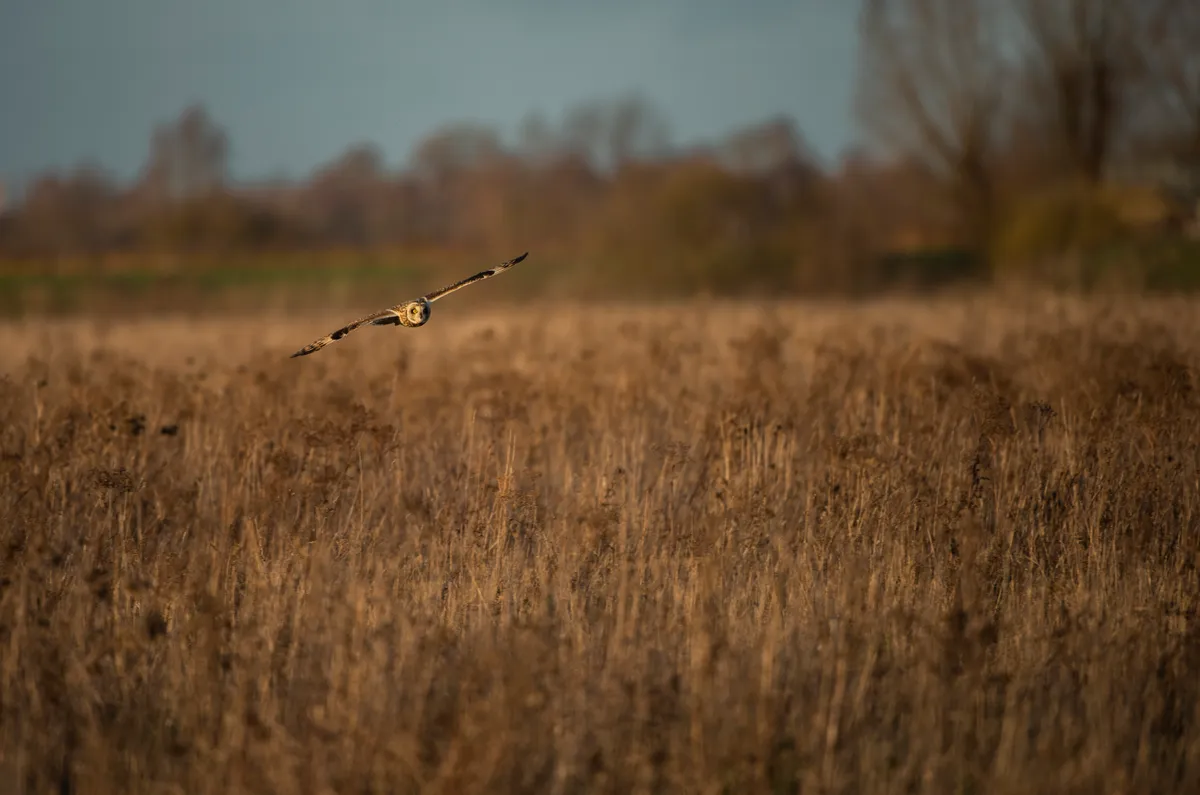
What work is being done to help short-eared owls?
Short-eared owls are sadly routinely shot on driven grouse moors. The RSPB has a dedicated investigations team that works to stop raptor persecution, and they are putting pressure on the government to bring in licensing controls for driven grouse shooting.
The British Trust for Ornithology are also doing research through Project Owl to get a better understanding of home range, habitat use and year-round movements.
How can the public help?
You can help by reporting any persecution you see to the police and the RSPB investigations team, as well as improving field vole habitat.
The RSPB is the UK’s largest nature conservation charity, inspiring everyone to give nature a home. Together with our partners, we protect threatened birds and wildlife so our towns, coast and countryside will teem with life once again. We play a leading role in BirdLife International, a worldwide partnership of nature conservation organisations.
Main image: A short-eared owl sitting on in fence post in County Durham, England, UK. © Ben Andrew/RSPB Images
